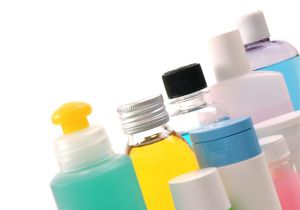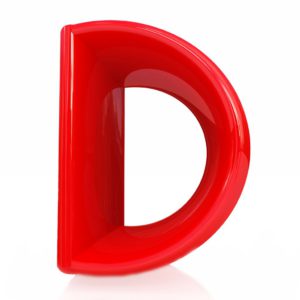 From optics to organs, 3D printing is innovating manufacturing in the same way as printing press did with the conventional one. Make-up and packaging are the first key players of a cosmetic revolution already started. 3D printing is a method to create three dimensional objects, such as a pair of eye glasses, a prosthetic leg, a guitar or a robotic airplane. It is a form of additive manufacturing technology consisting in laying down successive very thin layers of material (plastic, metal or an extremely wide variety of malleable materials) in different shapes using digital designs as printable models. The technology, invented in the early 1980s by Charles Hull, enables to print food, design products, mechanical, motor and aerospace industry products, and to repair or replace defective organs such as kidneys, heart or skin. The application of 3D printing in medical field represents a significant advancement in the treatment of disease and are source for the need of tissues and organs suitable for transplantation. Year by year 3D applications expanded and it is now driving innovations also in cosmetic industry. At the present time the impact of 3D printing in cosmetic is not developed on a large range, only make up and packaging have been printed, but it has the potential to grow and its many advantages could have a relevant impact in changing the consumers behavior in the future. The entire 3D printing industry is currently worth 700 million dollars and in the next 10 years it is expected to grow to a 8.9 billion dollars.
From optics to organs, 3D printing is innovating manufacturing in the same way as printing press did with the conventional one. Make-up and packaging are the first key players of a cosmetic revolution already started. 3D printing is a method to create three dimensional objects, such as a pair of eye glasses, a prosthetic leg, a guitar or a robotic airplane. It is a form of additive manufacturing technology consisting in laying down successive very thin layers of material (plastic, metal or an extremely wide variety of malleable materials) in different shapes using digital designs as printable models. The technology, invented in the early 1980s by Charles Hull, enables to print food, design products, mechanical, motor and aerospace industry products, and to repair or replace defective organs such as kidneys, heart or skin. The application of 3D printing in medical field represents a significant advancement in the treatment of disease and are source for the need of tissues and organs suitable for transplantation. Year by year 3D applications expanded and it is now driving innovations also in cosmetic industry. At the present time the impact of 3D printing in cosmetic is not developed on a large range, only make up and packaging have been printed, but it has the potential to grow and its many advantages could have a relevant impact in changing the consumers behavior in the future. The entire 3D printing industry is currently worth 700 million dollars and in the next 10 years it is expected to grow to a 8.9 billion dollars.
3D Make-up

Mink is the first 3D printer set up by Grace Choy to create makeup. By now eye shadows, blush and powder are perfectly produced but Mink inventor is sure it will be possible to create even lipsticks, lip gloss, foundation or any other kind of cosmetic, improving the mechanism of mixing colorful powders with creams and oils. Choy’s printer lets users choose any color on the Web, or in the real world (from a camera or a phone), and simply using the already-existing software, they print the chosen color into any kind of makeup. Choy’s idea originates from observing the way of manufacturing by both high-end labels and the most economic one using the same kind of raw materials; the only difference is given by the color which in some special and intense nuance is very expensive and can be bought only by high-end labels. That is the reason why users nearly never will find these particular nuances in cheap color cosmetics. Mink offers an easy solution to consumers giving them the opportunity to choose any kind of nuance overcoming any price limit. Anyone can select any color they like and simply, through common software, they may save a nuance seen on the computer (for example from a photo of a spring flower to a high-end label lipstick) and next print their DIY make up. Once you select the nuance, Mink compares your desired color with a software ad hoc. generating a code, the hex code, that you can put into any other program like Photoshop or Paint and simply press print. The cosmetic comes out from the printer and it is ready to be used.
Advantages: Fast, economic, DIY, no color limits
According to its inventor, Mink offers many advantages. It is fast as you can produce at home in few minutes the cosmetic you need and like, and moreover you save your time not going shopping. Saving money is another important advantage, which added to the DIY innovative procedure and the various chances of subjective creativity (no color limits), makes Mink very suitable above all to the young. Grace Choy is targeting the younger, 13-21 demographic who are less ingrained in their habits with certain brands and retailers. As a consequence they are open, being frequent users of informatics, to any innovation in technology and ready to try anything cheap. As a matter of fact, Mink offers the most color options of any brand in the world without spending any money on getting the make up and the price per unit is going to be around the same as mass retailers. The only money you have to spend is the cost of the Mink, less than 200 dollars, and of raw materials.
Mink revolution and experts’ reactions
Mink has been judged revolutionary because it will promote socializing happenings among teenagers who will meet at home giving parties where they will be able to create makeup for themselves and their friends. Once they test Mink they will change the whole cosmetic system and the companies will be obliged to change their selling politic. The specific characteristics of Mink have aroused enthusiastic reactions among the experts attending the convention where Grace Choy presented her 3D printer. The inventor has already involved famous beauty bloggers and influencers and their enthusiastic approval will make marketing easy; the Web itself has so many networks built in already. The next step is going to the big printing companies to cut a deal and that should make the process much easier.
3D packaging
According to Antoinette van den Berg Packaging is the cosmetic industry sector where 3D technology will make its biggest impact. She strongly believes the real 3D development lies in the development process for cosmetics packaging. Cosmetic containers could indeed be created stretching the design possibilities to new limits.The models can be designed and then produced quickly and easily, this is why 3D printing is set to make a revolution not only in cosmetic industry but also in both design and manufacturing and Though experts predict that there will be no need to replace an entire industry with 3-D printers, the device alone presents several opportunities that could dramatically shift the way the cosmetics industry designs and manufactures products. Current data suggests that 3D technology is more than just a passing fad. According to market research company Canalys, the global supply, manufacture and services for 3D printers is currently valued at around 2.5 billion dollars, but is set to explode in the coming years, and could be worth 16.2 billion dollars by 2018. About the consumers, 3D technology fits in with the custom-made trend, which basically means more flexible product development that is tailor-made to highly individual needs, something that is manifesting itself in both formulation and packaging.
Sustainable
Fast production and no shape limits are not the only advantages of this technology. 3D printing can be a significant advantage for the environment. You can define this technology as ecological as it serves as a highly efficient manufacturing process that can use a host of recycled or eco-friendly materials such as bioplastics. Plant-based plastics for 3D printing, made from natural and renewable resources, are easier to process than oil-based plastics. They are also food safe and odor free, but run slower than their oil-based counterparts on 3D printing systems. Oil-based plastics, on the other hand, have a higher softening point than bio-based plastics and create flexible parts that bend before they break. 3D technology could became another way that cosmetics companies could marry both quality packaging with earth-friendly principles and if cosmetics giants will invest deep budgets and talent capacity to pursue packaging innovation on a large scale sure this could really improve sustainability. According to experts, 3D printing, as a primary packaging option is viable but is necessary to do more progressive adoption upon considerations such as formula stability, shelf life, and branding because product integrity and consumer experience are critical measures that can’t be compromised.
Sources
http://bjo.bmj.com/content/98/2/159.long
http://www.tandfonline.com/doi/pdf/10.1080/02763869.2013.749139
Mink Is A 3D Printer For Makeup
http://www.in-cosmetics.com/en/Contributors/274439/Antoinette-van-den-Berg
http://www.cosmeticsdesign-asia.com/Packaging-Design/3D-printing-set-to-take-cosmetics-packaging-to-the-next-level
http://www.redorbit.com/education/reference_library/general-2/history-of/1112953506/the-history-of-3d-printing/
by D. Barillaro

